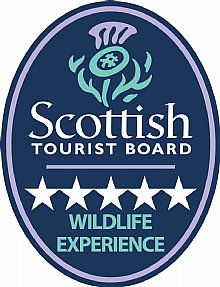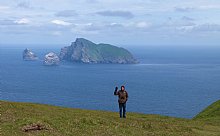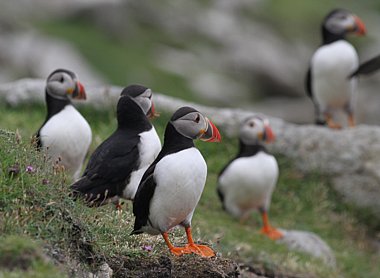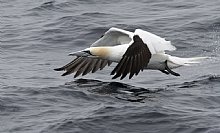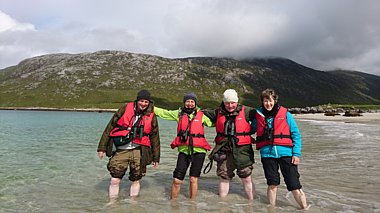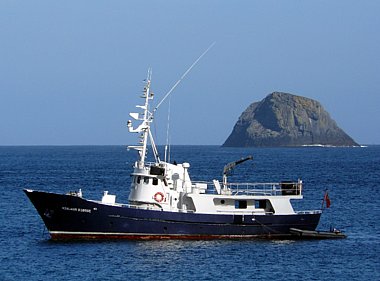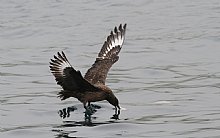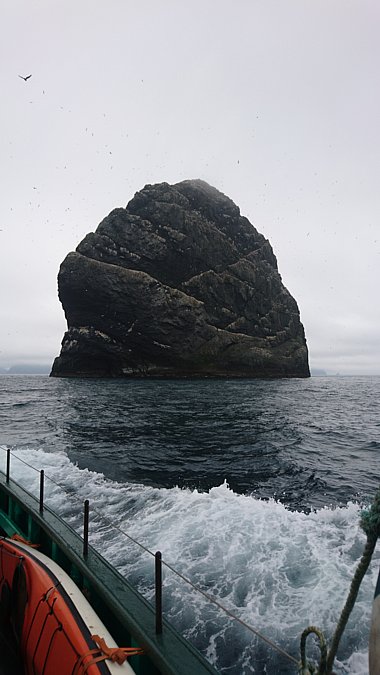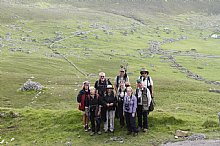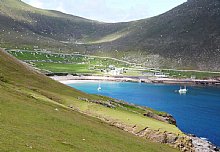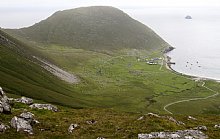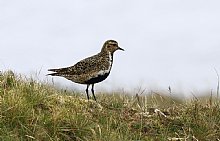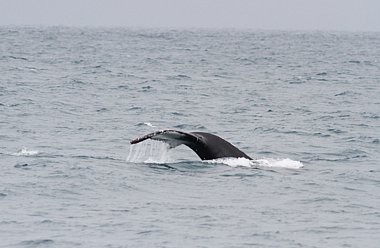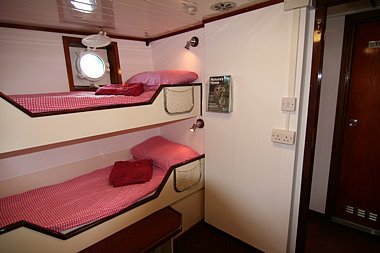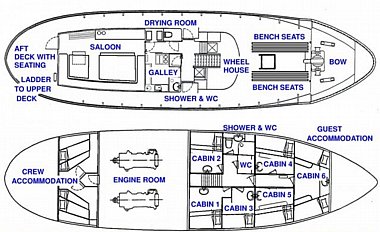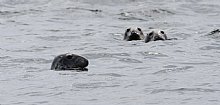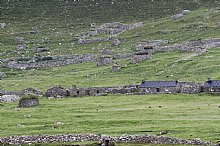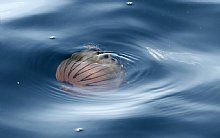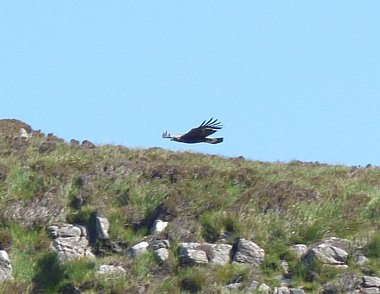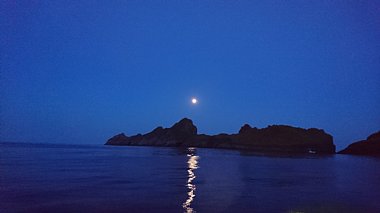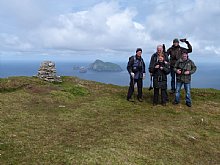St Kilda and the Hebrides
The most remote of Scottish islands!
| Destinations | |
|---|---|
| Focus | |
| 2026 Dates | |
| Duration | 8 Days |
| 2026 Price | £3595 pp . Deposit £500 |
| Max Group Size | 10 |
This is a very special and unique holiday, with eight days on the ocean waves aimed at reaching the outpost of St Kilda. One of Scotland’s five World Heritage Sites, in reasonable weather we hope to anchor in Village Bay for two nights giving us ample time to explore the largest island, Hirta. This should give us time to look for St Kilda Wren, a distinctive subspecies, plus St Kilda Field Mouse, Soay Sheep and take in some of the remarkable history of the former community. One of the most special destinations on the Heatherlea calendar, the sunrise and sunset can be as good as any in the world in good weather!
Starting and finishing in Oban, we plan to visit many other remote places during our voyage, perhaps including Loch Sunart on the Morvern peninsula, and/or the islands of Canna, Taransay and Vatersay. Our itinerary needs to be flexible and there are of course be no guarantees - St Kilda is a difficult place to get too even in summer months! The weather can intervene at any time and should we be unable to reach Hirta, our skipper/guides know the best places and islands to seek shelter and still enjoy great wildlife.
Rightly famous for its huge seabird colonies, the spectacle and clamour of one million birds at the height of their breeding season in north-west Europe’s largest seabird colony is an unforgettable experience. Highlights include Puffin (more than 250,000 – St Kilda is home to the largest colony in Britain) plus high numbers of Guillemot, Razorbill and Black Guillemot. The cliffs contain extensive ledges for breeding Fulmar (more than 100,000 – the largest colony in Western Europe) with Shag crammed into every nook and cranny below them. The Gannet colony is the largest in the world, estimated at over 120,000 birds and though Great and Arctic Skua populations have suffered recent decline, we should still see plenty.
As we travel, Manx Shearwater, Storm and Leach’s Petrel are likely, and though over 90% of the European breeding population of the latter (some 90,000 birds!) are on St Kilda, we are more likely to see them during sea passage. We plan to go ashore and explore whenever we can, and other birds during ‘landings’ might include Golden and White-tailed Eagle, Hen Harrier, Merlin, Peregrine, Eider, Red-breasted Merganser, Golden Plover, Greenshank, Curlew, Snipe, Common, Arctic and Little Tern, Wheatear and Twite. There is even an outside chance of hearing Corncrake should we land on Canna…? We look out for Otter and seals on rocky beaches and inlets, with Basking Shark, Common and Risso’s Dolphin, Harbour Porpoise and Minke Whale (and perhaps larger whales…) all very possible on the voyage of a lifetime!
About our vessel
The MV Hjalmar Bjørge (the correct Norwegian pronunciation is ”YAL-MUH B’YOR-GAY” but we call her the “HAL-MUH GEORGE” to keep life simple) is a former Norwegian ice-class rescue vessel. Since undergoing an extensive refurbishment this outstanding small ship combines luxury and comfort with seaworthiness eminently suited to adventurous sea voyages.
Comfortable accommodation is provided for a maximum of twelve persons in six twin berth cabins, each with hot and cold water and independent heating. Cabins are small with 'bunk' style beds and comfortable mattresses, and each has a sink. Please note there are no single cabins available on this departure. Duvets, linen and towels are provided. There are three separate toilets and two showers. Communal accommodation centres around a large deck saloon with seating and large viewing windows. Open air seating is also available, and these are excellent areas for eating and viewing. Mobile telephone coverage is patchy and variable. There is ample power on board for charging batteries etc. A drying room is available. The vessel carries good water stocks for general purposes. Crew accommodation is separate.
'Full board' includes a variety of cereals and a good choice of Scottish breakfast, lunch (or packed lunch if ashore), and dinner, all prepared by our excellent cook. Special diets are catered for. Tea, coffee, drinking water or hot chocolate are available. For safety reasons, hot meals and drinks are not provided whilst the vessel is at sea. The galley is equipped with gas cookers, microwave, fridge and deep freeze.
Getting ashore is usually by dinghy, and you will need to be reasonably mobile to climb short ladders and alight on rocky shores.
The wheelhouse is well equipped and instrumentation includes radar, Satelite Gyro compass, 2 GPS navigation aids, AIS Transponder and Receiver, VHF and Sailor radio SSB comms, Vodafone mobile phone plus sat phone and Marine PC with electronic charts.
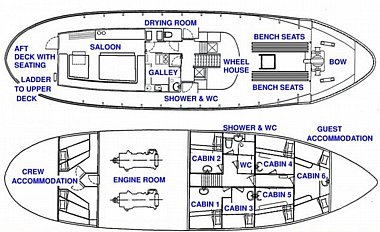
There is no fixed itinerary for this holiday and our travel plans revolve around the latest weather reports and our progress during daily sea voyages. And while reaching St Kilda is the priority, spectacular island scenery is all around and we should also visit a selection of islands, bays during our tour.
Day 1: Oban to Loch Sunart
Our tour begins and ends in Oban, where your Heatherlea guide for the week will meet you in preparation for our voyage. We meet our skipper and board our vessel early-afternoon (approx. 3.30pm) and once aqua and settled, our adventure begins as we set off past the islands of Kerrera and Lismore on a heading for the Sound of Mull. Our first wildlife may well be mammals, with Grey Seal and Harbour Porpoise both regular in this calm, narrow stretch. With the hills of Mull rising high to the west and the Morvern Peninsula on our east side, we watch out for White-tailed Eagle, which are often accompanied by Raven or Hooded Crow. Our evening anchorage will be in Loch Sunart, a lovely sheltered spot offering more wildlife as we relax for our first evening. On calm water, Eider, Goosander, Red-breasted Merganser, Black Guillemot and Red-throated Diver are all likely, with Common Sandpiper, Greenshank, Redshank, Curlew, Common Tern around the rocky coast. Red Deer may be seen moving around the hills, Common Seal like it here while the sea loch is one of the best on the west coast for Otters!
Day 2: Ardnamurchan and the Small Isles
Early risers may well get lucky with an Otter sighting before breakfast, and once fed and watered we head out towards Ardnamurchan point. Watching for wildlife as we go, divers can pop up anywhere with Great Northern and Red-throated (and a slim chance of Black-throated) likely. Heading into deeper water between Coll and the Small Isles, we focus more on seabirds and cetaceans. Shag and the auks will be the most numerous with plenty of Guillemot, Razorbill and Puffin plus a few Gannet, Fulmar, Kittiwake and Arctic Tern too. Cetaceans such as Minke Whale, Harbour Porpoise, Bottlenose Dolphin may be encountered, and the marine rich waters around the small isles are well known for attracting Basking Shark.
Our planned anchorage for the evening will be off Canna, the westernmost of the Small Isles and well placed for the following days sea passage. Expecting to arrive early-afternoon we should be able to land on this lush, green island with time to explore for a few hours. Home to a small, (yet increasing) Corncrake population. And while the long grass won’t make our attempts to see them any easier, we should at least hear the males calling. Other birds here might include Twite, Lesser Redpoll, Wheatear, Meadow and Rock Pipit with chances of Golden Eagle, Merlin and Hen Harrier too. There may even be time for a walk out to the islands Puffin colony before we settle in for the evening.
Day 3: The Skye coast and Sound of Harris
A longer day at sea, with plans to cruise up the west coast of Skye past Neist Point and into the Minch (if conditions are less favourable, travelling via the waters east of Skye will be considerably more sheltered!). Seabirds will again be evident, and we may well see our first Manx Shearwater, Storm Petrel, Great and Arctic Skua among more familiar fare. In deeper water cetaceans should always be on our radar, with Common Dolphin seen regularly, with Risso’s and White-beaked Dolphin and even Orca a possibility. Pushing on towards the Outer Hebrides and the Sound of Harris, we have chances of all three divers here, plus sea-level views of White-tailed Eagle on rocky islets. Our evening anchorage and landing chances will very much depend on the days progress at sea, possibilities including Loch Rodell, Leverburgh or if we’ve made exceptional passage, the pretty island of Taransay.
Days 4 & 5: St Kilda
Our prime target will now be St Kilda and if the weather is suitable, we head into the Atlantic Ocean, a direct passage from the south end of Harris taking between 5-7 hours. Cetaceans may feature again with Harbour Porpoise, Common Dolphin and Minke Whale the most common, though ‘larger whales’ including Humpback and Fin are recorded increasingly around the Hebrides. Scarcer, more pelagic seabirds become a possibility and among growing numbers of Manx Shearwater and Storm petrel we now have chances of sighting a Leach’s Petrel or Sooty Shearwater.
By the afternoon the islands of Hirta, Boreray and the famous sea stacks of Stac an Armin and Stac Lee Kilda will loom into view. St Kilda is rightly famous for its huge seabird colonies and it is likely that the sight and sound of over the largest Gannet colony (at over 120,000 birds) in the world will be the first spectacle! Also present in huge numbers will be Puffin (more than 250,000 – the largest colony in Britain), Fulmar (more than 100,000 – the largest colony in Western Europe), alongside numerous clifftop gatherings of Shag, Guillemots and Razorbill. Also breeding are Manx Shearwater, Storm Petrel and Leach’s Petrel (over 90,000 birds, and 90% of the European breeding population), though these species are nocturnal, and unlikely to be seen near St Kilda during daylight.
Having sailed our way into the shelter of Village Bay, we plan to spend two nights anchored here with opportunities to land on Hirta twice. Spending the full day on land (day 5), wherever you walk it is impossible to ignore the seabirds with plenty of pairs of Great Skua (though depleted by the avian influenza outbreak) and a few pairs of Arctic Skua occupying territories on the boggy ground. Waders including Snipe and Turnstone may be seen, while the most notable land-bird is St Kilda’s own distinctive subspecies of Wren, 2-3g heavier than mainland birds. If lucky we may glimpse St Kilda Field Mouse (an endemic subspecies) though it’s the Soay Sheep which are far easier to see! We also take plenty of time to explore what remains of the village, marvel at row after row of ‘cleats’ on the hillside formerly’ for storing seabirds and take in some of the remarkable history of the former community. There is no place on earth like St Kilda – a truly special destination on the Heatherlea calendar, and (in good weather) the sunrise and sunset from Village Bay is one of the best in the world!
Day 6: St Kilda to Barra
After two days and nights exploring the wildest place in the UK, we must begin our return journey. In favourable conditions we depart via the stacs to view the seabirds again, and perhaps take a look at island of Soay from the channel between it and Hirta. A long day at sea lies ahead, our goal to reach the Barra or Vatersay be evening. Anchoring off either of these gives us chances to see waders and terns on the beaches, with Knot, Sanderling, Dunlin, Turnstone, Common, Arctic and Little Tern among the possibilities.
Day 7: The Minch and North Mull
Leaving the Outer Hebrides and re-entering the Minch, we can keep watch from the decks for seabirds and cetaceans again as we steam east towards Mull. In favourable conditions we may be able to pass between Coll and Tiree, and by the afternoon we should have reached Calgary Bay, a favoured spot for Bottlenose Dolphin. Rounding the north end of Mull, we scan the hills for Golden and White-tailed Eagle again with plans to anchor at Tobermory. Any time ashore will be less wildlife related (though Otter may be seen in around the harbour) and more retail led, though the pretty harbourfront and shops will be a step back to normality after our St Kilda experience!
Day 8: Back to Oban
All good things must come to an end, and after a fantastic week on the ocean wave we return through the Sound of Mull to Oban. Our tour ends here, and after a memorable trip around the Hebrides we say goodbye to our skipper, crew and your Heatherlea guide.
NB – Please be aware that the above itinerary is for guidance only. With sea and weather conditions dictating safe routes of passage, it is unlikely that the above will be 100% fulfilled. There are any number of alternative options should the weather affect our plans, such as visiting the Monarch Isles, the Shiants, Treshnish Isles, the Small Isles (Rum, Muck or Eigg), Skye or locations along the Scottish Mainland.
This tour can be combined with:
MAINLAND SCOTLAND
Highlands and Wester Ross
SCOTTISH ISLAND ADVENTURES
Orkney in High Summer
Please note: all itineraries are given as a guide only. Actual holiday content may vary according to the judgement of your guide, and elements beyond our control (eg weather).
What's included in your 'St Kilda and the Hebrides' holiday price
• Seven nights cabin accommodation onboard our boat. Cabins are compact and small, and have a private hand basin. Toilet/shower facilities are shared. Hairdryers not available onboard.
• Full Scottish breakfast and dinner from Monday evening till Monday morning, packed lunch daily.
• Guidance from a professional Group Leader.
What's not included in your 'St Kilda and the Hebrides' holiday price
• Insurance, drinks and other items of a personal nature.
More Information
Accommodation: We are based on board MV Hjalmer Bjorge for the duration of this trip. Cabins are twin bunk style and are booked on a shared basis. Each cabin has a sink and there are 2 separate shower rooms and 3 toilets onboard the vessel. A drying room is also available. Plus a shared communal saloon and plenty of outdoor seating. An honesty bar is available whilst on board for alcoholic and soft drinks. This is a cash only facility.
Weather: Expect a wide variation in weather conditions, which can be wild and unpredictable, with temperatures perhaps averaging around 15°C. Sunshine, rain and strong winds are all possible, and you will probably experience a bit of everything.
Biting insects are a possibility so please bring a decent repellent.
Walking: A reasonable level of fitness is required for this holiday. A degree of agility is required to get in and out of the small landing craft which is used to get ashore, but there are always crew and the Heatherlea tour leader to lend a hand if necessary. Shore excursions will be by zodiac – a rubber, inflatable landing craft – and a mix of wet landings (directly onto a beach) and dry landings where a dock or pier is available. You may find a walking pole is useful! There will be moderate (3 to 6 mile) walks some days over uneven, steep and sometimes boggy ground. Although we take our time during these walks you will need a good level of mobility to enjoy this holiday to its maximum extent. Guests can of course remain on the boat if they do not wish to land. It is also important that you are able to get up and down the fairly steep staircases inside the Hjalmar Bjorge.
Clothing: Please bring walking boots or shoes, fully waterproof clothing and a small rucksack. Conditions on boat trips are invariably colder than those on dry land, so bring warm clothing!
Group size: There will be a maximum of 10 clients on this tour. Please note there are no single cabins available and as such any bookings for single travellers are taken on the basis that you will be in a shared (same sex) cabin. The holiday will be run at a relaxed pace, with time for photography and botany as well as fabulous bird watching in a spectacular setting!
Smoking: the entire vessel is a no smoking area. You must be ashore to smoke.
Please note that with eight days aboard a boat, seasickness is a possibility. Even if you do not usually suffer with seasickness the North Atlantic ocean can take a little getting used to so we recommend bringing a supply of preventative medicine. 'Sealegs' usually develop after a day or two aboard! There is a well-stocked shop on St Kilda, run by the permanent staff. This shop usually offers clothing, books and memorabilia.
Other birdwatching holidays in Outer Hebrides
- Hebridean Island Explorer
- Highlands and the Outer Hebrides
- Inner Hebrides from Canna to Iona
- North West Scotland Explorer
- Outer Hebrides in Autumn for birders
- Outer Hebrides in Early Autumn for birders
- Outer Hebrides in Spring
- The 'Outer Limits' Adventure
- Ultimate Outer Hebrides
WHY CHOOSE HEATHERLEA FOR YOUR SCOTTISH ISLAND ADVENTURE?
Heatherlea is THE company for top quality birding holidays in Scotland, chosen by more and more birders each year. Relax and enjoy first-rate birding with Scotland’s best guiding team, as we do all the planning! Our fully inclusive guided holidays concentrate on the real experience, and we take time to ensure that each of our guests enjoys everything we do. Above all, we make it our business to show key wildlife to you.
These popular holidays are carefully designed to explore the beautiful and wildlife-rich Scottish islands and far west coast. Many itineraries are unique, designed to give you the best of island wildlife at the best time of year. All are run at a leisurely pace, though we might move a little faster when rare migrants and vagrants are in our sights!
- We have been organising birding and wildlife holidays for over 30 seasons, and have a highly experienced and capable team. We also offer a telephone and email service outside normal office hours.
- This holiday has a maximum ratio of 7 clients per guide, putting the emphasis on personal service, and helping you get the best possible experience.
- Heatherlea are Mainland Scotland’s FIRST ‘5-Star Wildlife Experience!’ This is the highest available grading, classified as ‘exceptional’ by visitScotland.
- Single guests are never expected or invited to share.
- Our holidays often include things which others might invite you to pay yourself, for instance packed lunch and tips to hotels.
- Heatherlea hold full Tour Operator Insurance for your added protection.
- Heatherlea is a limited company, registered in Scotland. We are also registered to pay VAT, which is included in your holiday price as quoted on this page.
- Once your holiday is confirmed in writing by us, we promise not to surcharge the price for any reason.
Enjoy an excellent birding and wildlife holiday with Heatherlea.
Mainland Scotland’s FIRST ‘5-Star Wildlife Experience!’
'Exceptional'
Visit Scotland

